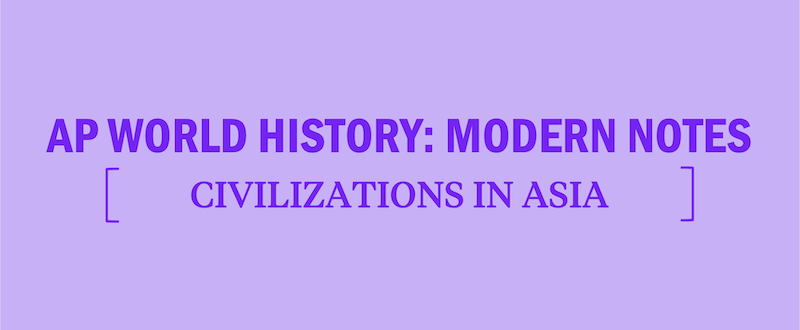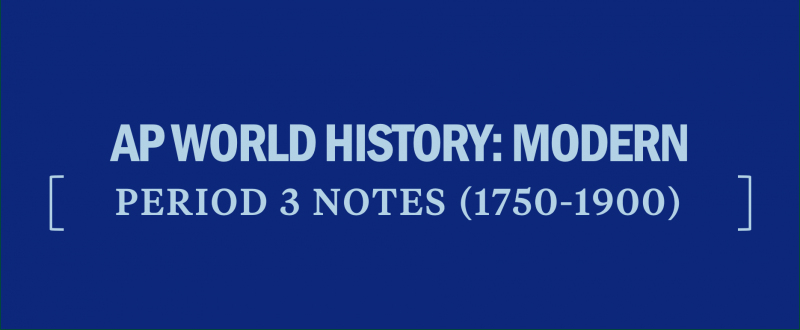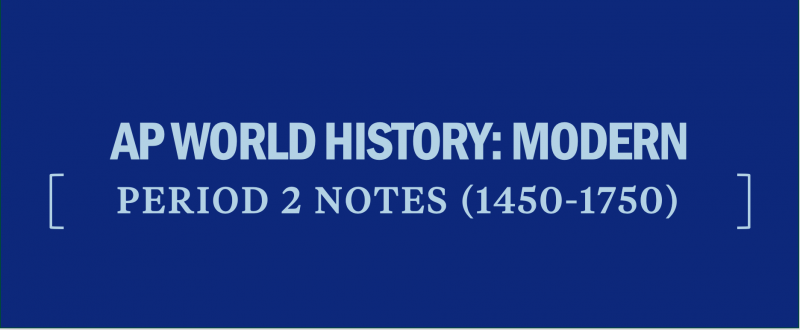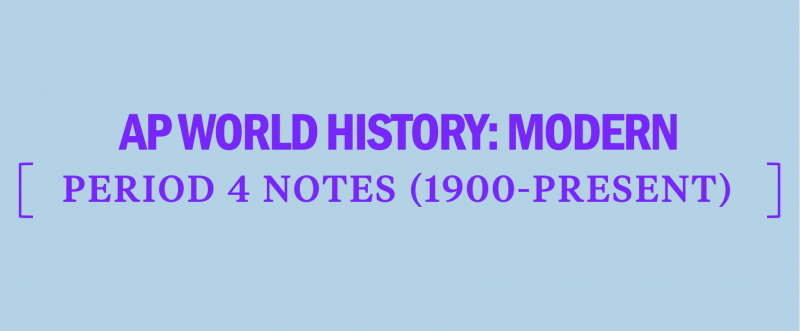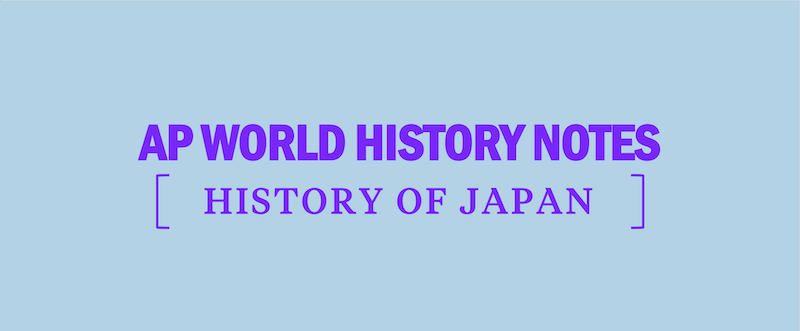AP World History: Sample DBQ Document Organization
Now that you’ve crafted a thesis statement, you’ll need to develop a plan for how to incorporate the given documents into your DBQ essay. Review the prompt and the documents below:
Analyzing the Documents
The readers award credit based on what the essays accomplish. They do not remove points if an essay is off-task, written poorly, or wrong. There is one exception, however. In the DBQ, you must demonstrate that you understand the documents being used. If your essay makes more than one major misinterpretation, credit cannot be earned.
A major misinterpretation is one that misses the basic intent of the document. If you wrote that the Proclamation of the Young Turks (document 7) was a movement away from ethnic and religious equality, that misinterpretation would be a major error.
If, instead, you wrote that the Ottoman Empire survived for decades after the Proclamation of the Young Turks in 1908, the statement would be wrong (the Ottoman Empire collapsed after World War I) but would not be a misinterpretation of the document. All of the documents could still count as being understood properly. Be careful—especially with visual and graphic documents. Students tend to misinterpret these non-written documents more than they misinterpret traditional written documents.
Using Evidence to Support Your Thesis
Your ability to use the documents provided to answer the question is the focus of the essay. Use the documents to analyze, and you will earn credit for doing so.
If the essay supports the thesis with appropriate evidence from all, or all but one, of the documents, then the essay earns full credit. If it uses evidence from all but two of the documents, then partial credit is earned.
As you are writing your essay, check off each document in your booklet as you use it. When writing under the pressure of time, you may forget to mention one or two. Remember to include the documents that are in graphic or visual formats. Students often forget to analyze these to the same degree that they do written sources.
To receive full credit, the documents need to be used as part of the analysis. In other words, do you mention something about a document that helps to answer the question? If a document is mentioned only in a list, it will not count. For example, “The Ottoman Empire looked down on ethnic and religious minorities, as seen in documents 3, 4, and 5.” If documents 3, 4, and 5 were not analyzed further, this essay would not receive full credit for supporting the thesis with appropriate evidence.
How should essays refer to the documents? Any of the following ways could count for supporting your thesis with evidence. Your essay could:
- Refer to the document number directly in the sentence: “As shown by document 7, the Young Turks believed that all ethnic and religious groups should be treated equally.”
- Refer to the document within parentheses at the end of the sentence: “The Young Turks believed that all ethnic and religious groups should be treated equally (document 7).”
- Refer to information presented in the line of source attribution: “As shown by The Proclamation of the Young Turks in 1908, the Young Turks believed that all ethnic and religious groups should be treated equally.”
- Combine the last two techniques: “As shown by The Proclamation of the Young Turks in 1908, the Young Turks believed that all ethnic and religious groups should be treated equally (document 7).” (best option)
- Give no attribution: “The Young Turks believed that all ethnic and religious groups should be treated equally.” (worst option)
Merely summarizing the documents is the easiest way to miss out on scoring well. You must link the document to the question, not just repeat what the document says. The following paragraph would help earn full credit for evidence in support of the thesis:
Document 1 is a chart that clearly demonstrates the ethnic diversity of the Ottoman Empire at the time of the new constitution. The Turks were a minority at 49.1% of the population, even though they controlled the government of the Ottoman Empire. The Constitution of 1876 (document 2) also reinforces the idea that the empire was formed of various ethnicities and religions. It formally states that all people are granted equality, and that all religions answer to the same law. However, this document reflects the law from the point of view of high government officials. It therefore demonstrates only the legal rules, rather than the day-to-day reality in the empire.
Another easy way to miss out on scoring well is by not having a strong thesis. How can you use document evidence to support the thesis if the thesis itself is weak? Your essay should be organized enough so that the reader can see how each document fits into the analysis presented in the thesis. Using the same terms that are mentioned in the thesis is a good way to make the links between the evidence and the thesis more apparent.
Discussing Point of View
Properly discussing the point of view (POV) of the documents is another important, and sometimes difficult, task. It separates the mediocre essays from those that score very well. Your essay will need to mention aspects of POV for at least two documents in order to receive POV credit.
So what is point of view? Essentially, POV is the analysis of why a certain person composed the material for the document. What is the author’s (or the document’s) “angle”? Comments in your essay that explore the motivations for the documents often count as POV. In addition, comments relating to the reliability of a source relate to that source’s POV.
You cannot just say that an author is biased or prejudiced to receive the point for POV. You must state why or indicate an impact or desired effect of the document.
Ask these questions in order to earn the full credit for POV:
- Does the occupation of the author give the document more or less reliability? For example, government officials may overstate or exaggerate information for political, state, or personal reasons.
- Does the social class, religion, national background, or gender of the author influence what is mentioned in the document?
- Does the type of document influence the content of what is said? A journal entry or private letter might be more candid about a topic than a public address that is meant to be persuasive. A political cartoon by definition is exaggerated and meant to convey a certain message, whereas a photograph may accurately represent what was in front of the camera for a shot, but could be staged and framed to capture only a certain perspective.
- Does the timing of the document influence the message? Recollections and memoirs written long after an event may not have the same reliability as first-hand materials done immediately afterward.
- Does the intended audience skew the message of a source? If a document is meant to be read by the sultan, it has a different POV than one written for a European audience.
- Describing the tone of the document can also count for POV if the document is sarcastic, triumphant, haughty, etc. Using tone for POV can be more subtle and is best used with other descriptions of POV.
Grouping Documents Together in Your Analysis
Historians analyze material by pulling together similar pieces of evidence, and, in writing your DBQ, so should you. The documents naturally come together into groups for analysis. Within each of your body paragraphs, group the documents. Essays that successfully have two or three groupings, depending on the question, often earn high scores.
Do not work with documents in isolation since a group cannot have just one document. A common mistake is for students to describe each document in order by paraphrasing what it says. This “listing” format is deadly to good performance on the DBQ.
The following paragraph from earlier provides an example of how to use and how not to use evidence to support your thesis. Let’s look at this paragraph again to see how effectively it groups documents.
“Document 1 is a chart that clearly demonstrates the ethnic diversity of the Ottoman Empire at the time of the new constitution. The Turks were a minority at 49.1% of the population, even though they controlled the government of the Ottoman Empire. The Constitution of 1876 (document 2) also reinforces the idea that the empire was formed of various ethnicities and religions. It formally states that all people are granted equality, and that all religions answer to the same law. However, this document reflects the law from the point of view of high government officials. It therefore demonstrates only the legal rules, rather than the day-to-day reality in the empire.”
In this example, the documents are discussed together, which creates a strong paragraph.
Organizing Your Documents
A straightforward way to organize your grouping is to indicate why you are grouping documents together in your topic sentence. For example: “The Ottoman Constitution of 1876 (document 2) and the Proclamation of the Young Turks (document 6) both indicate that the Ottoman rulers wanted to ensure that all of their subjects understood that they were equal before the law. In the Ottoman Constitution, subjects are _________, while in the Proclamation of the Young Turks, subjects are _________.”
Make sure to address each document when you list two or more documents in a grouping sentence. If you forget to actually use the document, it will cost you points for not using all of the listed documents.
When doing research, historians continuously ask themselves where else they could find valuable information on a topic. Historians are in constant search of new areas of inquiry and new sources to explain the past. Since the DBQ is the essay that asks you to be a historian, your essay needs to provide suggestions for additional documents that could be useful in answering the question. These suggestions should not be types of documents that are already present in the DBQ, but rather the “missing voice” not already included in the list of documents.
For this task, you do not need to be very specific; you do not even need to mention a specific document. All you need to do is mention a type of document that could be useful in answering the question asked. The readers of the AP essay do not expect that high-school students would have knowledge of hidden documents in some archive that might shed light on this topic. General statements involving hypothetical types of documents would be fine even if they do not really exist.
Just as important as mentioning a potentially useful type of document is describing why it would be useful. To earn credit, you need to include both: mention of an additional document and an explanation about why it would be useful in analyzing the question. Unfortunately, students frequently mention a type of additional document without describing why.
For our sample DBQ, examples of additional documents could be:
- a document from the sultan himself since he represents the central power of the Ottoman Empire
- official orders from the Ottoman government on how to treat different ethnic and religious subjects since such a document could show how the government implemented its policies
- a chart showing statistics of religious diversity within the empire that would help describe the position of the official faith within the empire
- a speech or an article from a Young Turk on his attitude toward the Ottoman government that would help show the differences in thought between reformers and officials
- a document from a religious leader within the Ottoman Empire that would provide a sense of how official religious policies were perceived by the religious communities themselves
- a map showing the distribution of different ethnic groups within the Ottoman Empire, which would help illustrate the divisions faced by this multi-ethnic country
Any of these responses, or any combination of these, would receive credit as additional document(s). Other potential responses would also be counted if their importance could be explained.
Be careful: mentioning a type of document that you have already been given disqualifies the statement. For our sample DBQ, mentioning a document from a person outside of the Ottoman Empire would not count because document 3 is written from a British perspective. Nor would mentioning a document from an ethnic or religious minority within the Ottoman Empire count because document 4 is written by an Armenian in Istanbul. To make sure that you earn credit, you may want to mention two or three different types of additional documents and why each would be useful.
Students often mention an additional document at the end of the essay. However, discussion of the additional document can take place anywhere in the essay, and the most sophisticated essays will place this discussion of the additional documents as part of the body of the essay.








